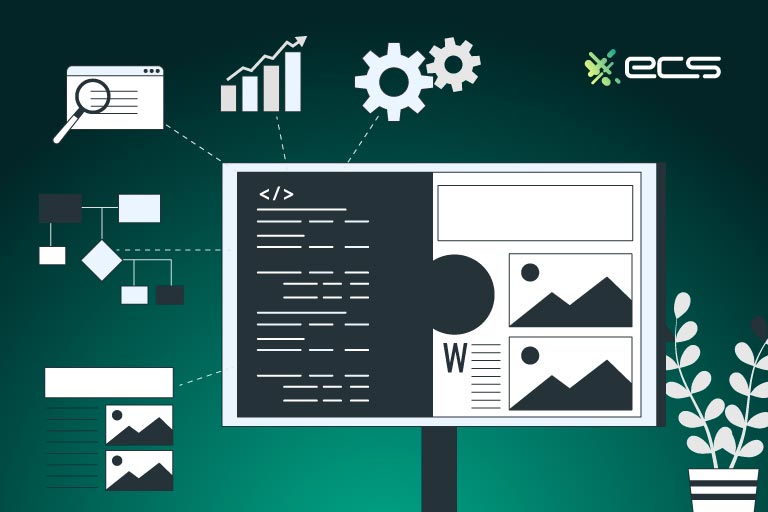Like a well-tuned engine powers a race car, the right integrated payment gateway fuels your business, ensuring payments are processed swiftly and securely so your customers can enjoy a frictionless buying adventure.
However, the wrong payment gateway can have the opposite effect. If customers regularly hit roadblocks, businesses see their costs and fees increase. They will also see their conversions and sales decrease. In fact, according to Baymard institute, 70.19% of online shopping carts are abandoned. With the right integrations and better shopping experience, merchants can reduce this number.
Despite being critical to a business’s success, payment gateways are often poorly understood. Most merchants understand the basics of a payment gateway, but few understand how they work and the available different types.
To help shed light on this important payment technology, we’ll go over exactly how integrated payment gateways work and how they can save money. We’ll also explain the other different kinds of payment gateways and what each type offers.
The Role Of A Payment Gateway
Payment processing may seem like it happens in the blink of an eye. Still, behind the scenes, there is a complex flow of information between several financial institutions, the merchant, and the customer.
This flow of information must be fast, but it also must be secure. This is where the payment gateway comes into play.
A payment gateway facilitates transaction data flow across a network when processing an electronic payment. Even though there are several types of payment gateways and different providers, they all serve the same basic essential function.
The payment gateway connects the following components of payment processing.
The Merchant
Your merchant account allows your business to process electronic payments, such as credit or debit cards, in person or online. Your website or a retail card reader sends the customer’s credit card information via the payment gateway when they enter it or use a physical card.
The merchant will connect the physical card reader directly to the payment gateway. Online businesses connect the website software and shopping cart to the payment gateway via the API (Application Programming Interface).
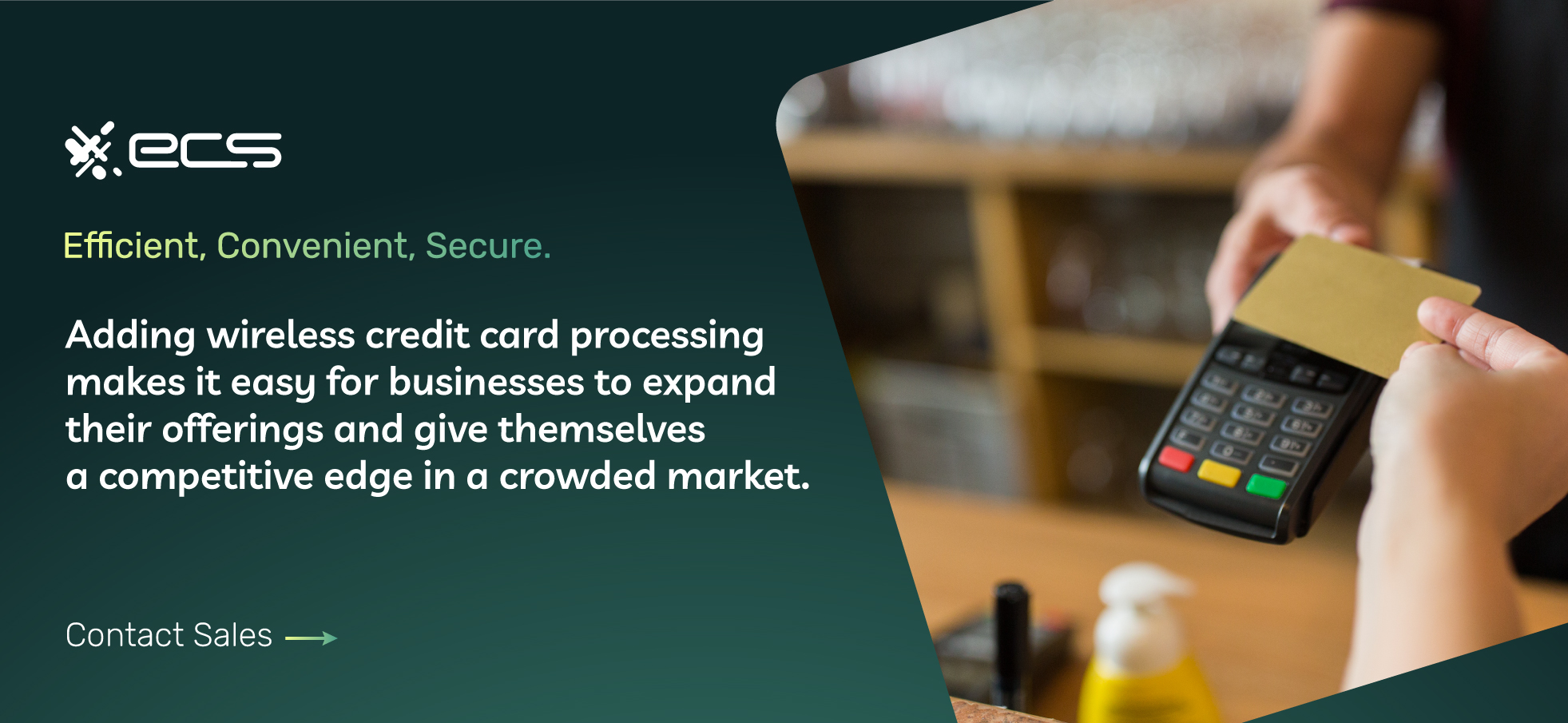
Payment Processor
The merchant terminal passes the transaction data to the payment gateway, which then proceeds to the payment processor. The payment processor is the financial institution where the merchant receives their merchant account.
The payment processor will do a few automated fraud and security checks before passing the information back to the payment gateway.
Card Networks
The card networks such as Mastercard, Visa, or American Express will then receive the transaction data. They will do their own authorization and fraud checks as well.
Customer’s Issuing Bank
The final stop is the customer’s issuing bank, which issued the customer his or her credit or debit card. The issuing bank receives the transaction data via the payment gateway and confirms the account is valid and has sufficient funds or credit.
The issuing bank then sends a confirmation along the payment gateway confirming the data. The merchant’s POS system or card reader will then display that it has authorized the charge.
At this point, the funds are pending. Final settlement takes about two days in most cases. After settlement, the merchant account receives the funds.
What is an Integrated Payment Gateway
If you’re a business owner, you’re likely already familiar with the concept of vertical integrations in general. Essentially, it means combining different stages of production or operations.
A vertically integrated payment gateway (or just an integrated payment gateway as it’s usually called) is similar in that it combines several payment processing functions into one single gateway that the business uses.
An integrated payment gateway combines features such as security, fraud detection, various card networks, and merchant tools. This combination creates an operational efficiency that reduces costs and speeds up transactions.
The business benefits from overall lower processing fees due to the passing on of these reduced costs. Reduced costs are a big selling point for integrated payment gateways, but there are also many operational benefits.
Non-integrated payment gateways can be cumbersome for many businesses with advanced payment workflows. Non-integrated gateways generally offer a mix of different features. It would help if you assembled all of these in a way that creates a workable payment workflow. This method is often overly complicated, specifically for online retailers.
Combining these features in a vertically integrated payment gateway allows for much easier development and implementation for virtually any sized business. It also provides benefits for both physical retailers and online businesses.
Integrated Payment Gateway Benefits
Almost every business that accepts digital or electronic payments can benefit from an integrated payment gateway. Those benefits can range from substantial cost savings to improved operational efficiency.
Below, we’ll look at some of the most common benefits businesses can experience when using an integrated payment gateway.
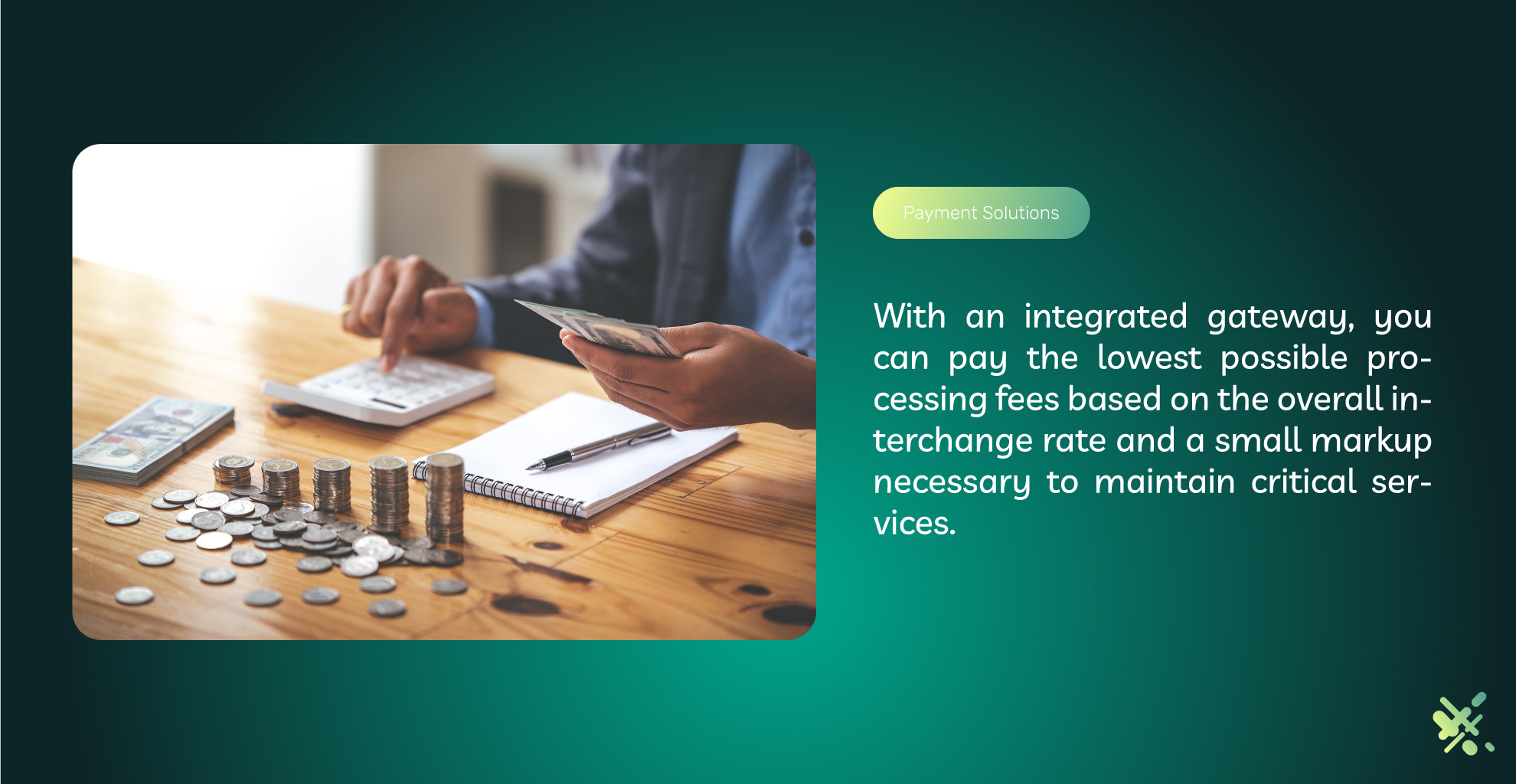
Cost Savings
Cost savings are often the most touted benefit of an integrated payment gateway. By avoiding any outside platforms or hosted payment services, you don’t pay any extra fees those parties collect. Any hosted platforms or services essentially work as middlemen, and you’re subsidizing them when not using an integrated payment gateway.
With an integrated gateway, you can pay the lowest possible processing fees based on the overall interchange rate and a small markup necessary to maintain critical services.
Interchange-plus pricing is the term for this. It can offer many cost savings for physical businesses and online sellers. This type of pricing does not require paying any additional fees per transaction or intermediaries.
Overall, you’ll keep more money in your pocket when using an integrated payment gateway. You can also have the option of pricing your products lower to give yourself a competitive edge in the marketplace.
Simplicity
An Integrated payment gateway offers a significantly streamlined workflow compared to other options. Integrating payment into websites is much easier. They can also be integrated into apps or other places.
Integration saves time and money when developing an online store. You only have to work with one API instead of several. You will also have more options when implementing your payment system to make the entire process seamless for your customers.
More Control
Non-integrated payment gateways lock you into a specific payment workflow. This workflow may not work best for your business and your customers. This mismatch can hurt sales and cause customers to leave to look for options that suit them better.
An integrated payment gateway gives a business far more control over its entire payment process and workflow.
Hosted Payment Gateways
Sometimes, merchants confuse hosted payment gateways or pages with integrated payment gateways. Hosted payment pages are most often used in online settings. For example, a customer will make a purchase on a website.
When checking out, the system sends the customer to a hosted payment page on a different site than the one they were on before. On this hosted page, the customer enters their credit card information. After authorization, the customer then returns to the original website to confirm their purchase.
A different website handles the entire payment process in these cases. For some businesses, this allows for an easy way to accept customer payments without connecting an integrated gateway via an API. They also will have an easier time meeting PCI DSS compliance rules.
The downside is that these offer the least amount of control regarding the checkout process.
It’s also important to note that many integrated payment gateways have features allowing the merchant to create their own hosted payment pages. With an integrated payment gateway, you get more options to use the method that works best for your business.
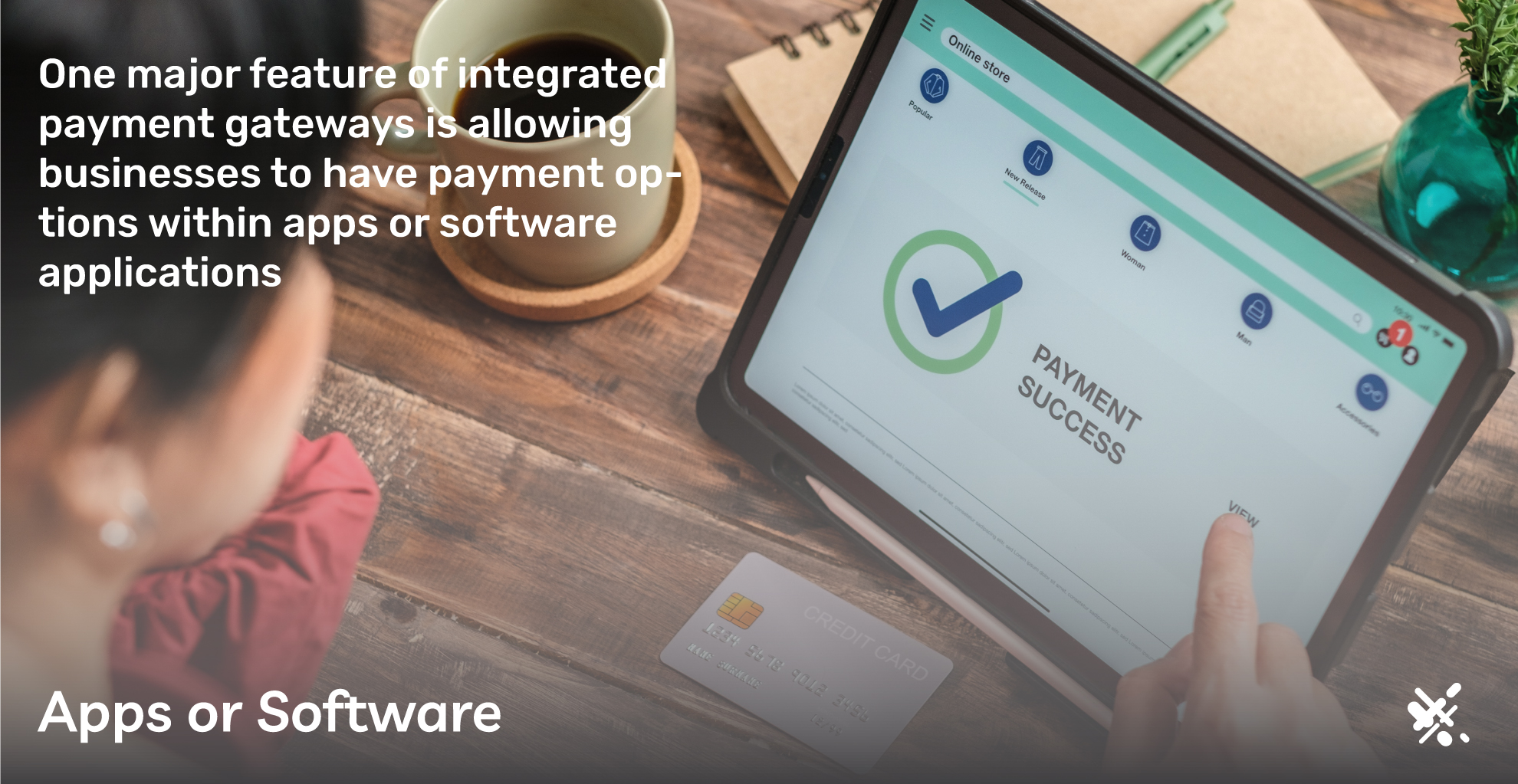
Integrated Payments Within Apps or Software
One major feature of integrated payment gateways is allowing businesses to have payment options within apps or software applications. Customers need to make purchases on a separate website without an integrated payment gateway.
For example, a business runs a mobile app that allows customers to post items for sale. They may have a premium area on the app where users can purchase credits to boost the exposure of their items. An integrated payment gateway enables the app to process these payments directly within the app.
This process is all done via the API of the gateway. An integrated payment gateway will have an API that developers can access. Developing the payment gateway API enables you to integrate the payment functionality directly into the app. It works the same for any app or software application.
Without access to the payment gateway’s API, app users would have to leave the app to make a purchase, adding friction and reducing overall sales conversions.
If you operate an app-based business or are considering adding an app to your business, plan for an integrated payment gateway. This way, you can accept payments to turn the app into a revenue stream.
Integrated Payment Gateway Security Features
Integrated payment gateways also allow for many security measures to help your business reduce fraud. In fact, 20% of businesses using integrated payment gateways experience fewer instances of fraud due to built-in security features. This increased security and fraud detection helps save money and avoid chargebacks and disputes.
Credit card fraud comes in a variety of forms. Cybercriminals sometimes steal or hack credit card information, causing this to happen. They will then use that information to make fraudulent purchases. In these cases, the business often finds itself holding the bag. They lose out on the purchase’s value and generally have to deal with a chargeback.
There are also many cases of friendly fraud. Friendly fraud is when a customer makes a purchase but denies they authorized the charge. They may also dispute the charge for various other reasons. The goal is to reverse the charges, but the customer keeps the product or services rendered.
Both of these cost businesses in the end and take up staff hours as the businesses have to respond to the disputes. Businesses can fight back with security features that the integrated payments gateway has built in.
An integrated payment gateway will run the transaction data through an initial fraud detection check once it accepts it. This fraud check serves various functions, such as comparing the card against a blacklist. The gateway may also flag the transaction if it detects any other indicators suggesting fraud.
Some other red flags are transaction size and the country of origin for the transaction. These alerts protect businesses before the charge even goes through for full authorization. Catching fraud early saves businesses both time and money.
Another security feature of integrated payment gateways is the ability for merchants to set their own fraud filters. The payment gateway will have certain default filtering settings. However, merchants can customize these based on their experience and security levels.
The merchant can choose filters to hold certain transactions for manual inspection and processing. The filter may catch certain IP addresses, transaction amounts, or other factors the merchant chooses. The merchant can use certain other filters to reject orders based on their chosen criteria.
This increased level of control allows merchants to have the most robust protection against fraud. But they can also ensure that they process the most amount of legitimate transactions at the same time.
An integrated payment gateway will also have all of the standard security features.
- AVS (Address verification service)
- CVV (Card verification value)
- Payer Authentication methods (Verified by Visa, Mastercard SecureCode, etc.)
How To Setup A Payment Gateway
Setting up a payment gateway is relatively easy, but it does differ depending on the platform and the setting. For example, a retail setting will be different from an online setting.
Below, we’ll discuss how different businesses set up payment gateways.
Physical Store
Your POS system will integrate your payment gateway in a retail or physical store location. Most POS systems will have a setup menu where you can configure various settings.
In the POS configuration area, there will be the option to enter your payment gateway API credentials. Your API credentials are a unique transaction key created by visiting your API’s dashboard.
If you’re using a gateway like Authorize.net, you should log into your Authorize.net dashboard. From there, you would go to the section for API credentials and keys. You can generate a new transaction key and find your login credentials in that area.
You use the transaction key to confirm that every transaction sent to the payment gateway comes from your business. So, don’t share your transaction key or API credentials with anyone.
Once you have the API credentials, you enter them into the corresponding area of your POS system.
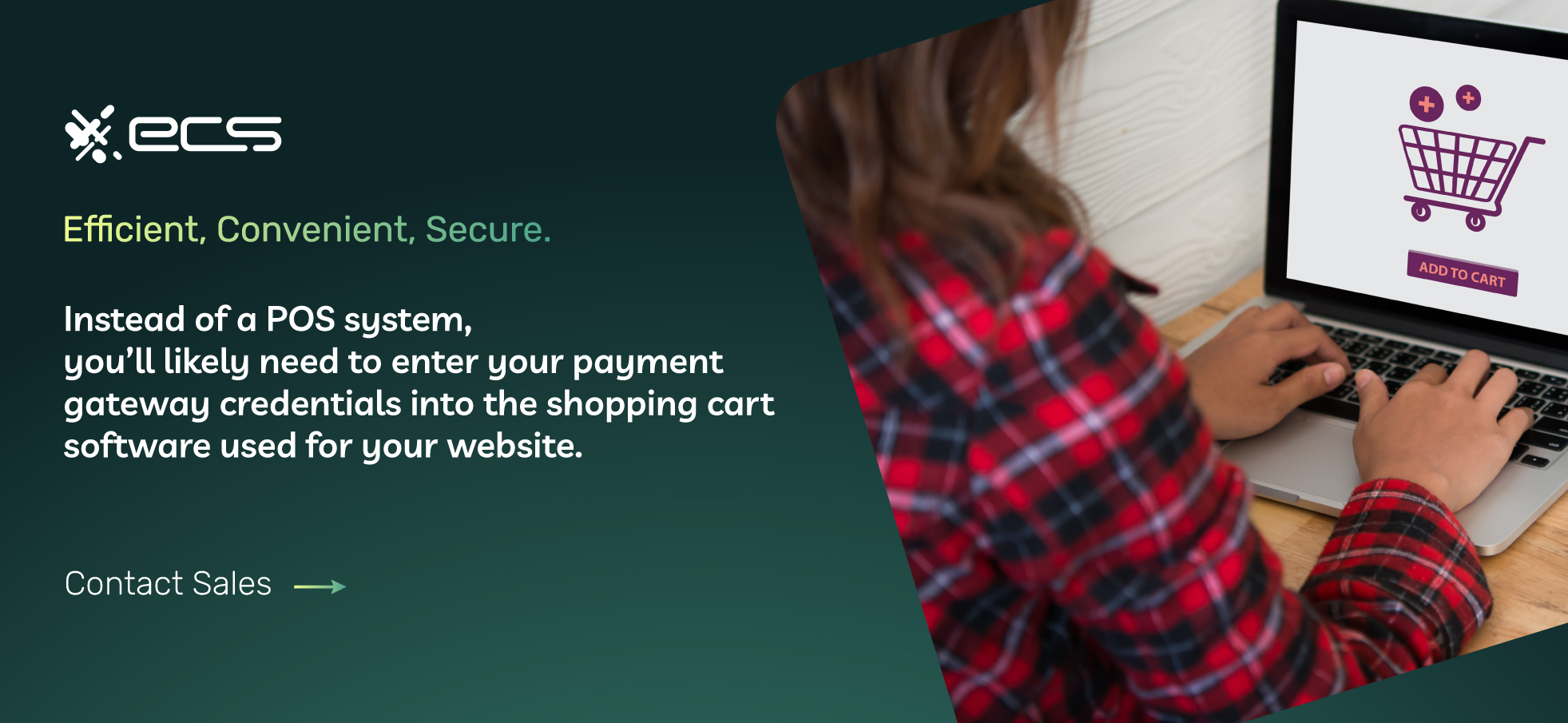
Online
For an online business, setting up the payment gateway is similar. Instead of a POS system, you’ll likely need to enter your payment gateway credentials into the shopping cart software used for your website.
Popular third-party shopping carts such as WooCommerce or Zen Cart all have areas to enter your payment gateway and API credentials. You will generate your transaction keys and credentials just like with a retail location, but instead, enter them into the corresponding area within the shopping cart you are using to power your website.
Payment Terminals
If you’re using a stand-alone payment terminal or card reader, the setup is similar to that of a retail POS system. Instead of using the POS software, you must configure the payment terminal.
There is a wide variety of payment terminals, and each will have its own menus and ways to access them. We recommend contacting your payment processor or payment terminal vendor for instructions on configuring your card reader.
Developing For The Payment Gateway’s API
A benefit of using an integrated payment gateway is that it allows businesses to develop directly for the API. Developing around an API lets businesses create custom workflows and solutions tailored to their business model.
If your business requires a payment gateway API that allows for development, there are a few things you want to look for.
Documentation
You’ll want to ensure the API has full technical documentation that your developers can access. This documentation needs to be complete and up to date. An outdated API or documentation can slow development and cost your business money.
Testing Options
A good payment gateway API will offer a robust testing or sandbox environment. Testing allows you to run your custom application in a safe environment with full access to all the API features. You can then debug or troubleshoot your applications before going live.
Technical Support
Your payment processor and payment gateway should offer developer support, such as in-house technical assistance if you need anything answered that isn’t in the documentation.
Without this technical support, your development could hit a snag that slows production and increases cost.
Security
Security should always be a top concern for merchants when dealing with online transactions. A data breach can be financially devastating and cause damage to your business’s reputation.
Your payment gateway should have up-to-date security features that align with modern standards. Some payment gateways, such as the merchant interface and the coding, are outdated. Outdated gateways can pose a security risk for your business.
You’ll also want your payment gateway to have real-time security features to detect fraud, including filtering and other means to help reduce your expenses related to disputes and chargebacks.
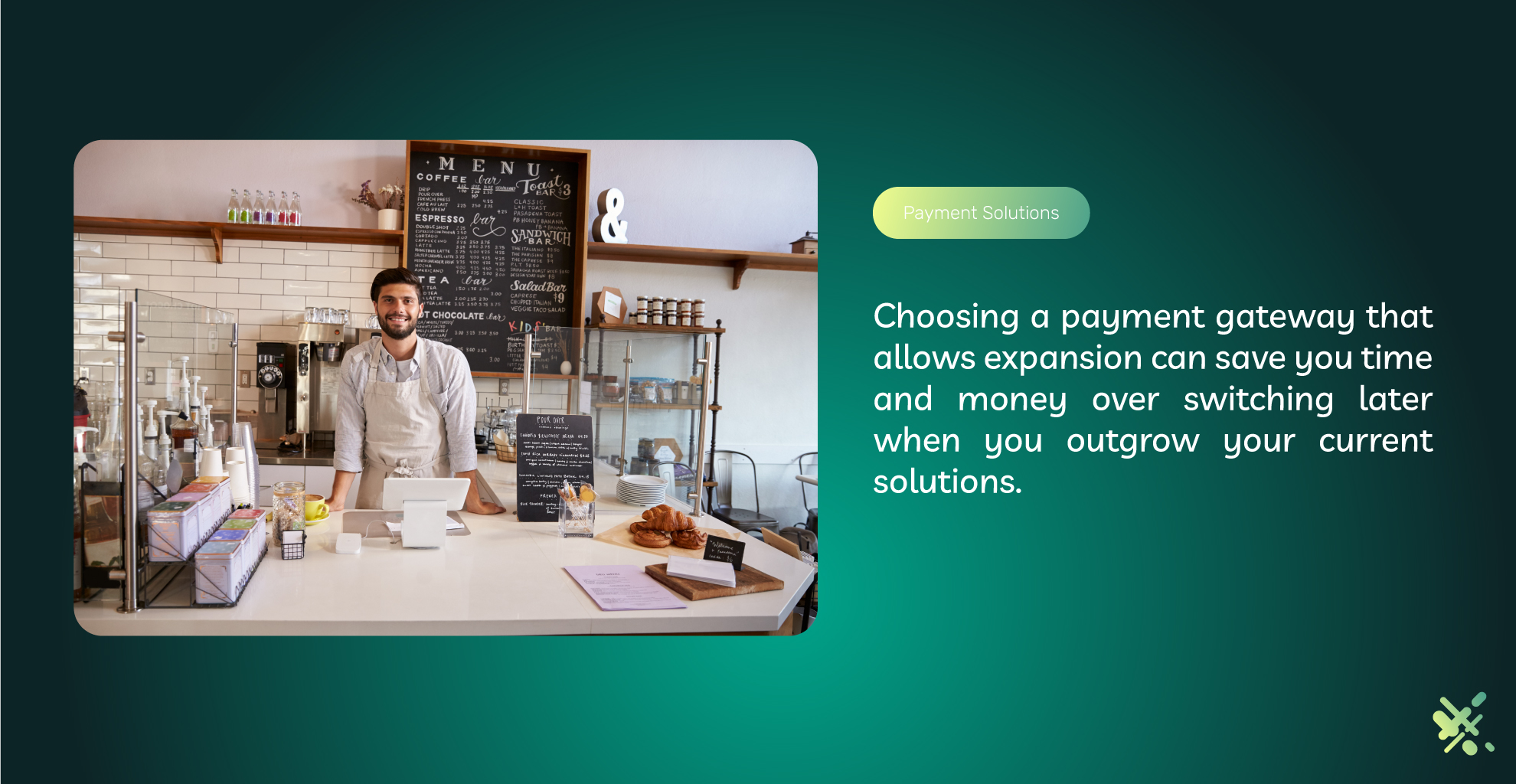
Choosing A Payment Gateway
You’ll want to determine your needs when choosing the right payment gateway. It’s important to consider both your current business situation and plans for future expansion.
Choosing a payment gateway that allows expansion can save you time and money over switching later when you outgrow your current solutions.
Retail or Online
The first thing to consider is whether you primarily do business at a physical location or online. Some payment gateways have features specifically geared toward physical processing. Some other payment gateways cater more to online processing.
They can generally always work in both settings. Still, if you are solely an online business, you likely have different needs than a physical retail location that only does a small percentage of its sales online.
International Sales
When deciding on a payment gateway, it’s important to consider your international customers, as some gateways, like NMI, provide superior solutions for handling international transactions, while others do not.
Invoicing and Payment Links
Different payment gateways offer tools for invoicing and payment links. With an integrated payment gateway that offers these tools, you can also connect your payment gateway to popular accounting software applications. You can then streamline your payment workflow and receive payments faster.
An integrated payment gateway lets you send your clients invoices with payment links directly. These links lead to hosted pages where clients can securely make their payments. These payment links can work even if you don’t have a website to accept payments.
If payment links and invoicing tools are something that your business can benefit from, make sure your payment gateway has these features.
Recurring Payment Tools
If your business model relies on recurring payments, such as memberships or subscriptions, then you should examine your payment gateway’s recurring payment tools. Billing vaults allow card information storage on the payment gateway rather than locally at your business. Payment gateway vaults make security compliance easier, lessening your risk and liability. As a result, it saves you time and money.
Other tools include features such as automatic card updating. These tools automatically update the card on file with new account information so that your recurring billing can continue even if a customer receives a new card.
Choosing a Payment Processor
Choosing a payment gateway means you’ll also need to choose a payment processor. Your payment processor is an important decision. The right choice may help your business save money and increase revenue.
Here are a few key areas to consider when choosing a payment processor.
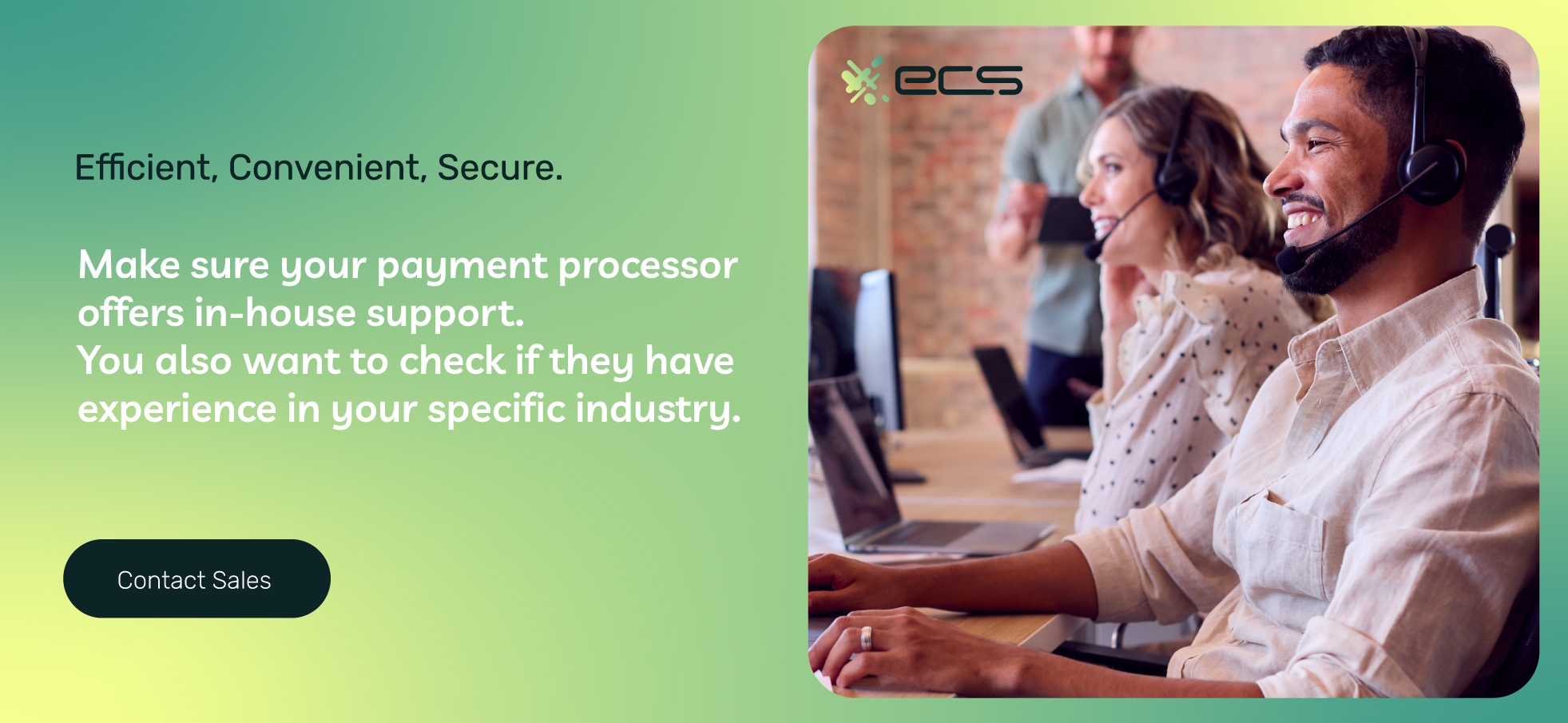
Customer Support
Customer support might be the most important thing to look for in a payment processor. Personalized one-on-one support is critical for any business. Payment processing is at the heart of every business. You must solve any issues quickly to ensure the business can continue accepting payments.
Make sure your payment processor offers in-house support. You also want to check if they have experience in your specific industry.
Fee Structures
Every payment processor will need to charge transaction fees to provide their services. However, some fee structures can end up costing you more money.
Each business can benefit from different fee structures, but an interchange-plus model or a flat rate is usually best for most merchants. Compare different fee structures and find the right fit to give you the lowest fees possible.
High-Risk Experience
If you’re in a high-risk industry, you need a payment processor experienced with high-risk transactions. Many different products and industries are high-risk, including products and services such as:
- Tobacco
- Firearms
- Debt collection
- Credit repair
- CBD
- Nootropics
- Bail bonds
- Saas (software as a service)
- Subscription model businesses
- Gambling
and many more.
If you are in a high-risk category, work with a payment processor that understands your industry. Doing so will help you secure the lowest fees possible to save your business money. It will also ensure that your merchant account always maintains a good standing and remains free from the risk of closure.
Avoid Aggregate Payment Processors
Aggregate Payment processors group all their merchants under a single account, allowing them to pool the risk. As a result, most merchants end up paying much higher fees.
Common examples of this are providers such as Square or Stripe. These may be good options for very small businesses, but the higher fees and reduced customization options make them a bad choice for serious businesses.
More Information About Payment Gateways
Choosing a payment gateway and a payment processor is one of the most important decisions regarding your business. The right choice will save you money year after year and set your business up for continued success.
If you need help choosing a payment gateway, contact ECS Payments. We are leaders in payment processing and have experts ready to assist you with your decision process.
We also offer several payment gateways, so you can always find the perfect solutions for your business.
Call ECS Payments today and speak with one of our experts to learn how the right payment gateway can save your business money every month.
An integrated payment gateway is an online payment processing tool that connects the payment processor directly to the business’s website. There is no third-party redirect at check-out. ECS Payments integrated payment gateway offers security features, fraud detection, merchant tools, and more.
An integrated payment gateway optimizes your business with efficiency, reduces costs, gives you more control, enhances security, and speeds up checkout. ECS Payments offers seamless integrated payment gateways that will ultimately increase your business profits. Contact us today to get started.
Integrated payment gateways reduce costs by eliminating the need for external platforms, third parties, or hosted payment pages. With an integrated payment gateway, minimizing additional fees per transaction. ECS Payments can help your business implement integrated payment gateways, contact us today to learn how.
An integrated payment gateway simplifies workflow by providing a streamlined payment process integrated directly into your website, app, or other platforms. You only need to work with one API, which makes development and implementation easy. The best part is it gives your business more control over the payment process. ECS Payments offers integrated payment solutions that will optimize your security, control, workflow, and profits.
